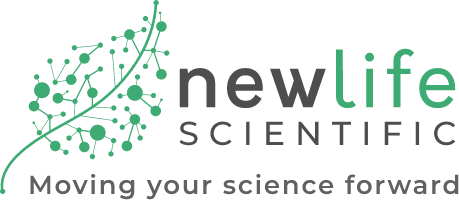Transcript:
Hello. Welcome to tech shop at new life Scientific. Today we're going to talk about testing procedures on the carry line of spectrophotometers. We move a lot of these units, well built machines. One of my favorite machines to work on in general. This particular unit is a newer model, carry 100, manufactured by the agilent line. It's been gone through a couple of different companies and it's got a six x six transport with thermal temperature control unit. We bundle it with a computer software screen turnkey unit here. Some of our testing procedures that we go through is one of the first things we do is run a hole oxide sample. A lot of people are running that today to validate the system.
One of the other tests we run is the carry validation report which does several different wavelength accurate tests, baseline flat test, flatline test. And it's running through and gives us at the end of the report. At the end of the test will give us a signatureable report. It'll be found on all of the hard drives in your documents folder. The completed test will be saved on your hard drive. While the test is running in the background. We can still go in and talk a little bit about the different tests that it runs for. These are their performance tests that we run. Accuracy, reproducibility, noise and flatness. There are some other tests that require chemicals, tylene for example, and other chemicals that you'll be able to run as well. This software is on the system, different standards. You can also customize your test.
These tests that we run are left as they are come from right from the carry software. Of course the hole oxide sample that we run is a solid state, doesn't need calibrated so we know it's accurate. And again, we like to show those in our photography when we list our items. Unit is going to continue to run as it's been doing in the background here. It's telling you it's looking for a peak at 656.1. Looking at the results. As I said, it will give us at the bottom of this list a pass fail on the different tests that it's running. And that is just one of the ways that we ensures the test on a temperature control unit. We make sure the unit will run to your twelve different positions on the carrier.
I don't want to open this now because it'll mess up the test over there. And we'll also make sure that it gets down to temperature and also up to temperature. There would be cases where you would run it above ambient and below ambient. So with those tests you can sure you got a good lamp, that you have a good lamp, good sensors on the reader that the transport is operating correctly. In some cases we do have to adjust. There's a routine that we run to make sure that those positions are correct. So you're not missing one. Nothing worse than to run a series of samples. And then you have to go back and rerun them. When one didn't get recorded because the light path wasn't close. Also the transports have mixers in them. We do test for the mixing as well.
We put the magnetic bar inside the unit. It's actually a star when they're that small. You flip the switch here down to the bottom and there's a speed test. We test all that. So just to be sure that you get a good unit back at the screen there. It's running a line reproducibility test. And it's going to run that sample five or six times. Making sure that it's within acceptable parameters. So that you know that every time you run that you. It is. They know you can reproduce it. So you know again that your mechanics on your wavelength chopper splitter is working correctly. And that's the testing part of the testing procedure on a carry line of spectrophotometers. Thank you very much. Bye.


















